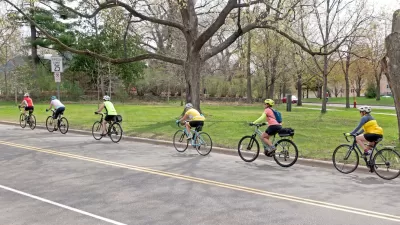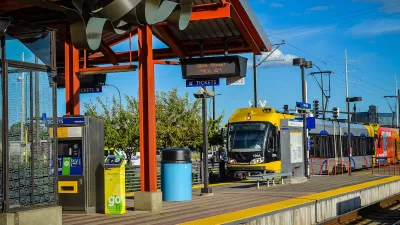Small-scale development on single lots is an alternative to the centralized mid-rise norm. But this kind of classic infilling may not be as easy as build-it-and-they-will-come.

Alex Cecchini gives us one of the standard densification techniques: "The Minneapolis Comprehensive Plan mostly calls for dense, mixed-use development along commercial corridors, and we see zoning that matches that goal. I don't think this is a wise strategy – there is limited land abutting these corridors, and many have a mix of rentals and multiple retail or commercial tenants that make lot assembly and redevelopment very difficult."
Instead, infilling could come about in a decentralized way, lot-by-lot. From the article: "Single lot development is important. It's a small-scale process, meaning more local developers (rather than national, publicly-traded ones) can take part. Profitable single lot development also bypasses the timely and costly process of lot assemblage with the city. Finally, it adds competition so landowners don't hold out for combined offers on combined lots. So, can it be done?"
Cecchini goes on to explore several challenges facing 2 to 3-story single-lot development. Unfriendly zoning codes and dubious demand economics might stand in the way of affordable housing independent from big developers.
FULL STORY: The Barriers to Small Scale Infill Development

Trump Administration Could Effectively End Housing Voucher Program
Federal officials are eyeing major cuts to the Section 8 program that helps millions of low-income households pay rent.

Planetizen Federal Action Tracker
A weekly monitor of how Trump’s orders and actions are impacting planners and planning in America.

Ken Jennings Launches Transit Web Series
The Jeopardy champ wants you to ride public transit.

California Invests Additional $5M in Electric School Buses
The state wants to electrify all of its school bus fleets by 2035.

Austin Launches $2M Homelessness Prevention Fund
A new grant program from the city’s Homeless Strategy Office will fund rental assistance and supportive services.

Alabama School Forestry Initiative Brings Trees to Schoolyards
Trees can improve physical and mental health for students and commnity members.
Urban Design for Planners 1: Software Tools
This six-course series explores essential urban design concepts using open source software and equips planners with the tools they need to participate fully in the urban design process.
Planning for Universal Design
Learn the tools for implementing Universal Design in planning regulations.
Ada County Highway District
Clanton & Associates, Inc.
Jessamine County Fiscal Court
Institute for Housing and Urban Development Studies (IHS)
City of Grandview
Harvard GSD Executive Education
Toledo-Lucas County Plan Commissions
Salt Lake City
NYU Wagner Graduate School of Public Service





























